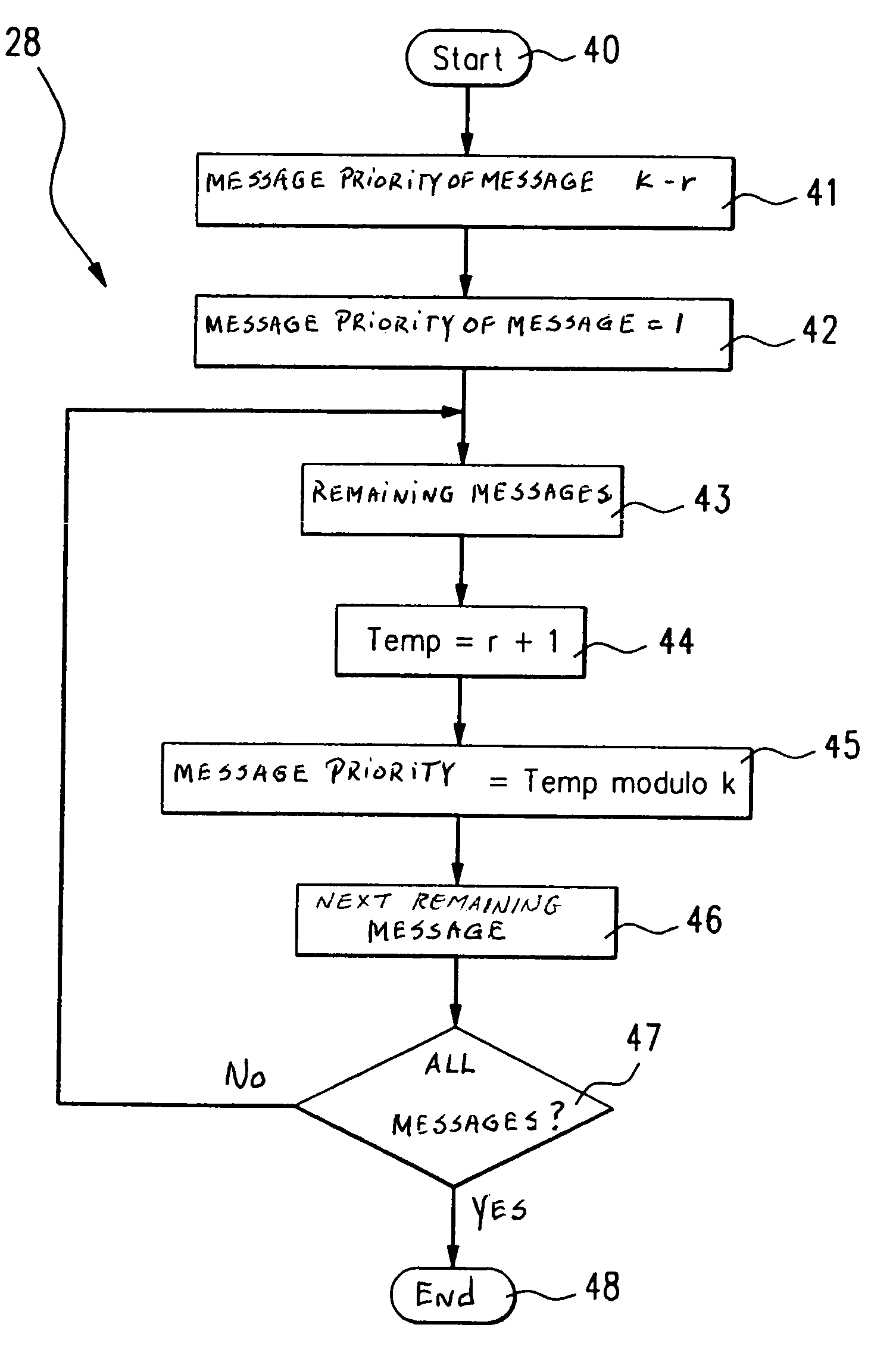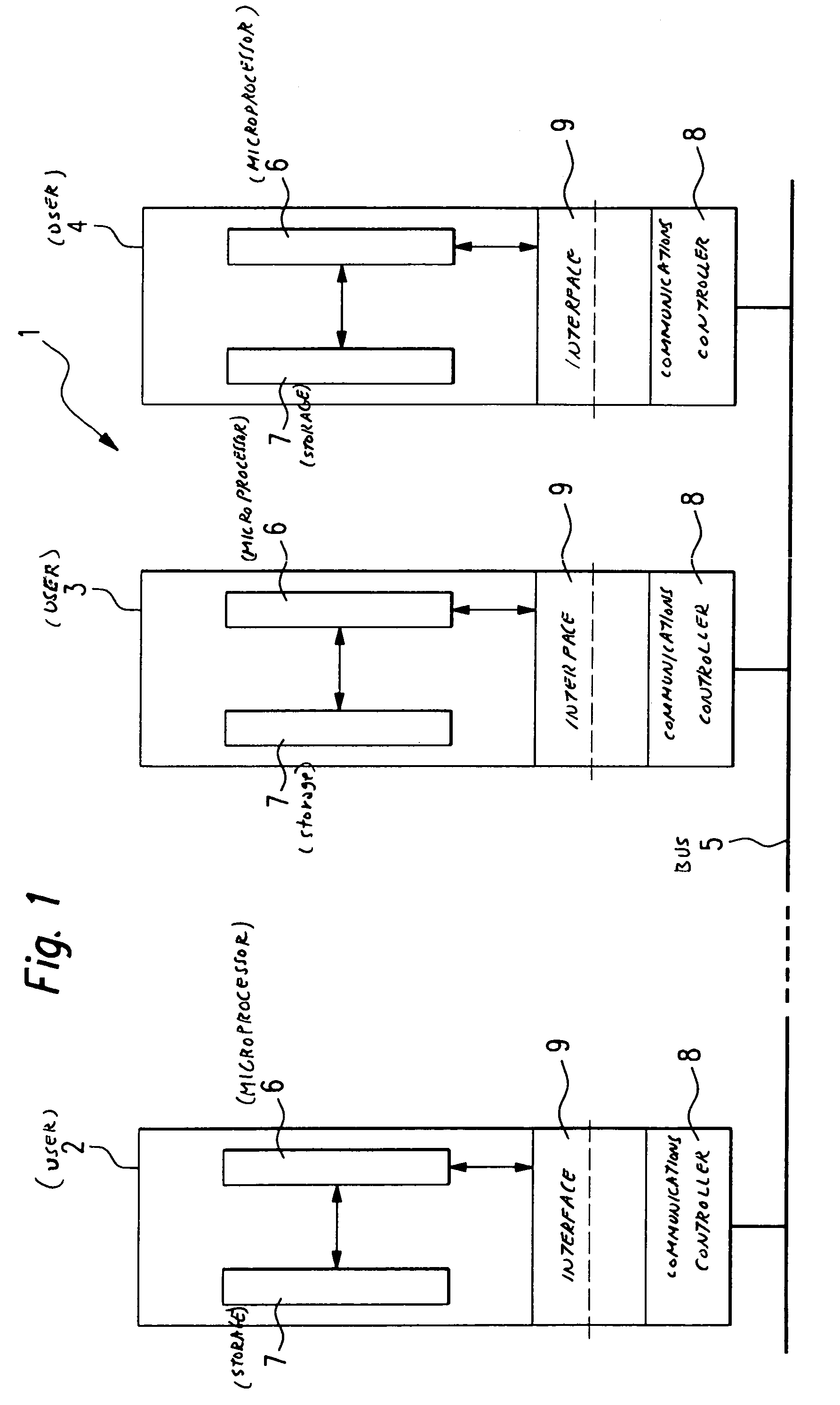Method and communication system for data exchanging data between users of a bus system
a bus system and data exchange technology, applied in the field of communication system, can solve the problems of inflexible protocol, infinite latency period, and less well suited for worst case scenarios
- Summary
- Abstract
- Description
- Claims
- Application Information
AI Technical Summary
Benefits of technology
Problems solved by technology
Method used
Image
Examples
Embodiment Construction
[0067]In FIG. 1, a communications system according to the present invention is designated in its entirety by reference numeral 1. The communications system 1 includes several users 2, 3, 4, which are in communication with one another, using a bus system 5 working in distributed fashion for the exchange of data. Users 2, 3, 4 are, for example, control units of a motor vehicle. The data to be exchanged are included in messages which are transmitted by users 2, 3, 4 via the bus system 5. A specifiable priority is assigned to each message.
[0068]Users 2, 3, 4 each include a computing unit (so-called process computer) which is designed as a microprocessor 6. A computer program is able to be run on microprocessor 6, and is stored in a storage element 7, e.g., a flash memory. The computer program is suitable for executing the method according to the present invention. The computer program is loaded into microprocessor 6 before or during processing. Users 2, 3, 4 also include a communication...
PUM
 Login to View More
Login to View More Abstract
Description
Claims
Application Information
 Login to View More
Login to View More - R&D
- Intellectual Property
- Life Sciences
- Materials
- Tech Scout
- Unparalleled Data Quality
- Higher Quality Content
- 60% Fewer Hallucinations
Browse by: Latest US Patents, China's latest patents, Technical Efficacy Thesaurus, Application Domain, Technology Topic, Popular Technical Reports.
© 2025 PatSnap. All rights reserved.Legal|Privacy policy|Modern Slavery Act Transparency Statement|Sitemap|About US| Contact US: help@patsnap.com



